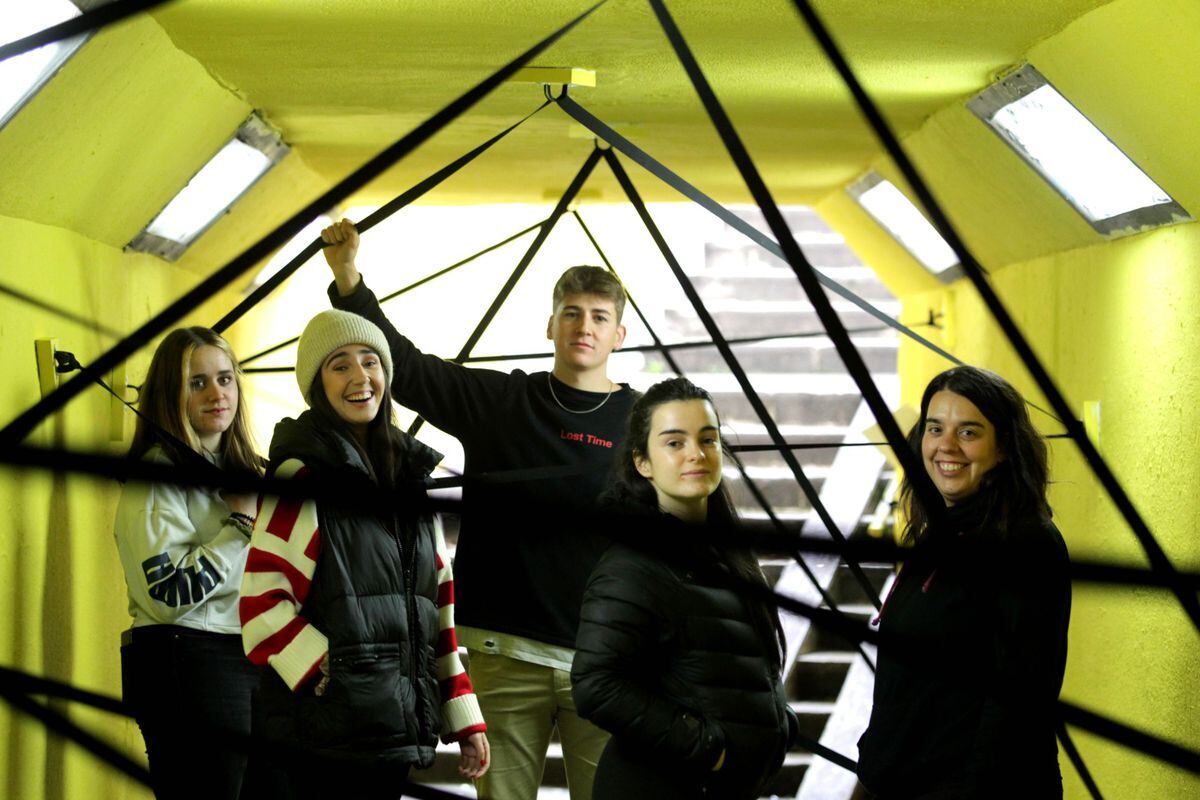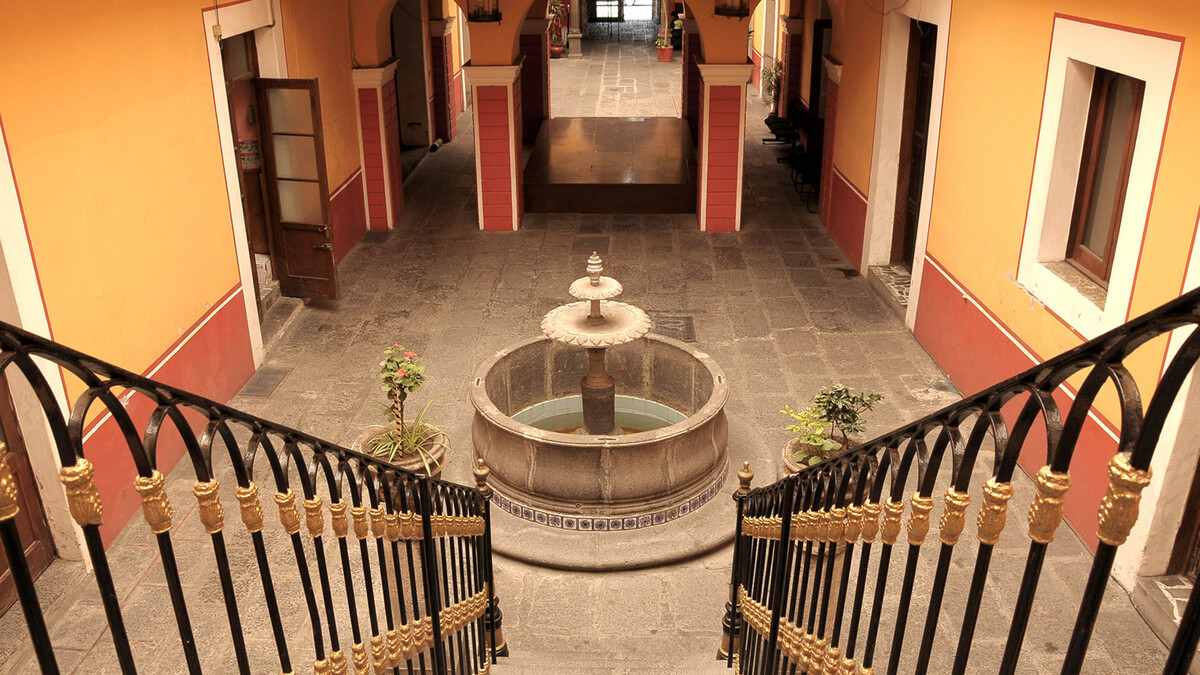The underground pedestrian crossing of Plaza San Pio X in Bilbao, on the north edge of the Deusto Bridge, has become a labyrinth of obstacles. The lemon yellow color of all its walls alerts you to danger. To cross from one side to the other, either towards the University of Deusto or towards the center of the town, you have to push aside the rubber strips that weave a disturbing and soft spider web. These rubber bands, which will remain from this Thursday until the 25th, symbolize the fear of crossing it, the poor accessibility of its stairs, the fear that sometimes the darkness causes in its users, and their objective is to accelerate the reflection on mobility solutions from the past that in the present should go through burying cars, and not citizens. A global debate in view of the risks that they incorporate to life in urban centers.
“The idea is to extend to all users of the pass for a week what many groups feel when they cross it,” explain Nerea Sanz and Eire Vila, two of the team members whose project is part of the Bilbao Bizkaia Design Week 2021. Their idea has earned, among many other projects, the right to intervene the bridge. Before facing the challenge, they conducted a survey among the users of the two “V” tunnels under the roundabout, measuring 22 and 35 meters. The findings confirmed all their fears. “People don’t like it, they all reported that it was unpleasant, it caused them fear, that it was dark because some lights failed and on top of that the continuous graffiti overshadow the traffic,” explains Vila. “All this reaffirmed us in the project as a way for people to put themselves in the shoes of the other: on the surface of others”Says Sanz.
“The idea of the game as a project transformative and communication I found it very interesting, explains Jon Gorospe (Vitoria 1986), an artist recognized by numerous public and private institutions, such as the Salomon R. Guggenheim Museum (USA) or the Sasakawa Foundation (Japan-Scandinavia). He comes from Lisbon to inaugurate an exhibition and next week he moves to Rome to cut the ribbon of another exhibition with his works. Gorospe, a former student of IDarte, has served as the team’s tutor. “This project was the one that best synthesized and developed the concept of art as a transformation tool at the service of citizens”, explained the artist who has intervened in various urban spaces in various capitals on five continents. This week he will offer a conference within the Bilbao Bizkaia Design Week 2021. “He has contributed his experience and knowledge to the project,” explains Sanz.
The project of the Vitoria group is called Ioki, in memory of the traditional children’s game that was based on jumping with rubber bands. Elastic bands, “the kind that women mostly buy in haberdasheries” -the team relates with intention-, that allow people to interact with them in a game of giving and receiving, contributing and reflecting. An argument with which they want to return people to the center of life in the city, and to urbanism, and urban design as the tools to fix and satisfy the needs of citizens.
The rest of the team formed by Amaia Pidal, Andrea del Hoyo and Jakue Arruabarrena painted the metallic structures of the entrances with aerosols. They still had a few hours before the opening of the facility and their experience inside the tunnels confirms that “there should not be underground passages of these characteristics”, they say almost in unison, “or in any case they should be much more luminous and provide better sensations ”, they contribute to the debate. Amaia, Andrea and Jakue are fourth graders. The choice of teams was the decision of the university center to better reproduce the working conditions they will face shortly. “You come to teams that are already made and whose members you do not know, and you have to adapt,” explains one of the teachers from the Vitoria educational center who accompanies them. Social networks are already beginning to distribute the project. Both the school and the hashtag #IOKI are already delving into the group’s arguments.
A City Hall official hallucinates with the new image of the underground passage. From white stained with a thousand graffiti to bright yellow there is an abyss, but it gives the bridge a lot of light and a point of joy that makes the traffic different. After checking that the students had the permits in order to do the intervention, he takes care of writing down the specifications of the yellow paint used, to continue with that same tone when the walls get stained again. It will be the only remainder of the intervention. The hooks on the wall that hold the rubber net will be removed after the provocative urban intervention, on the same day the 25th. “It’s exciting, it’s the first time a group design has become a reality,” explains Eire. It would be another success that, in addition, provokes an intervention, in this case municipal, to improve it.


:quality(85)/cloudfront-us-east-1.images.arcpublishing.com/infobae/JVEG643FOJGGJFSNY3RS7DZM4I.jpg)


